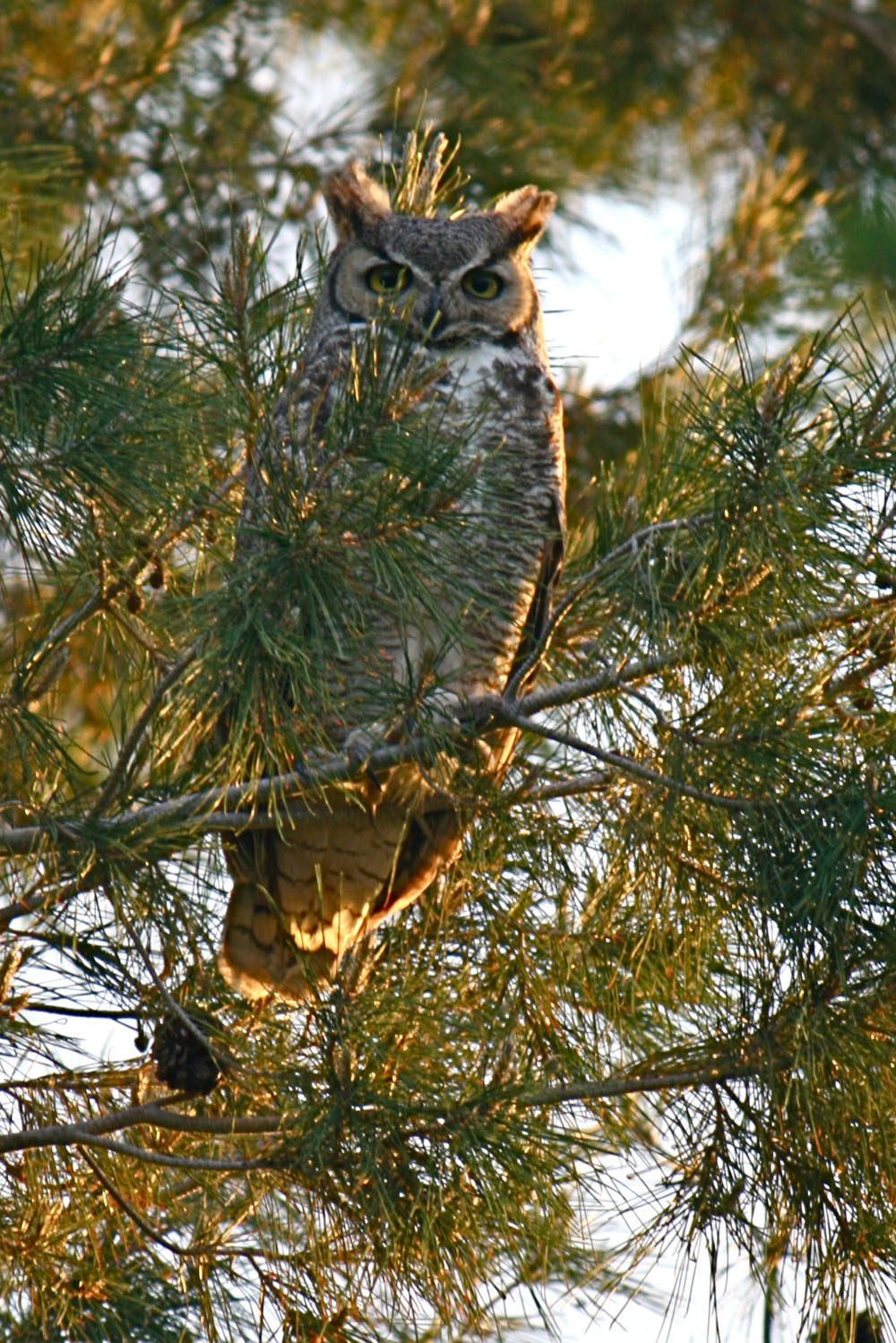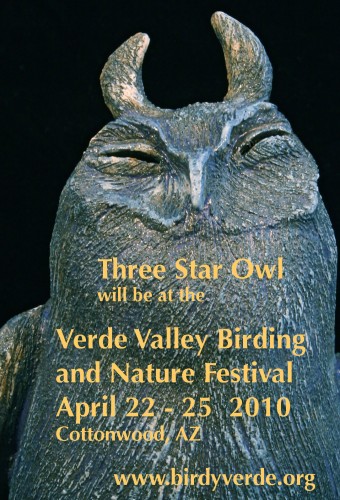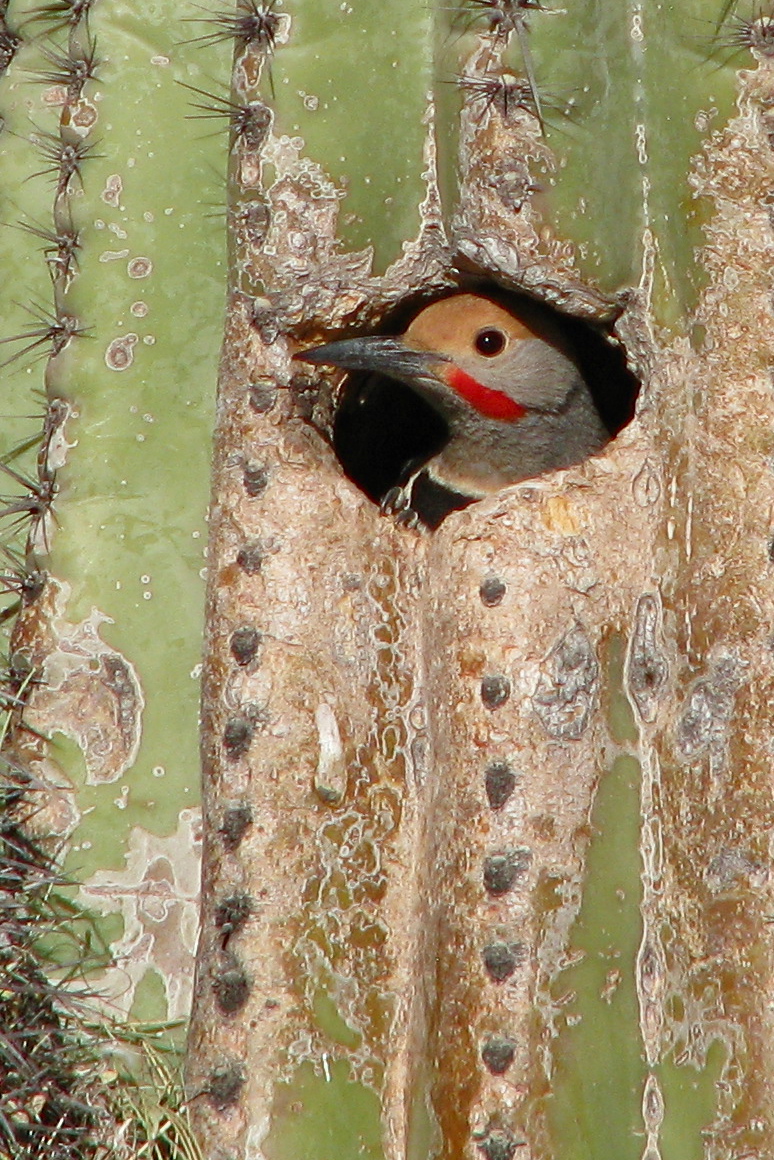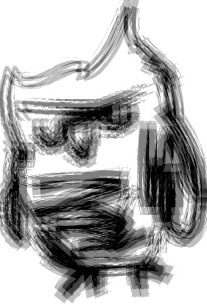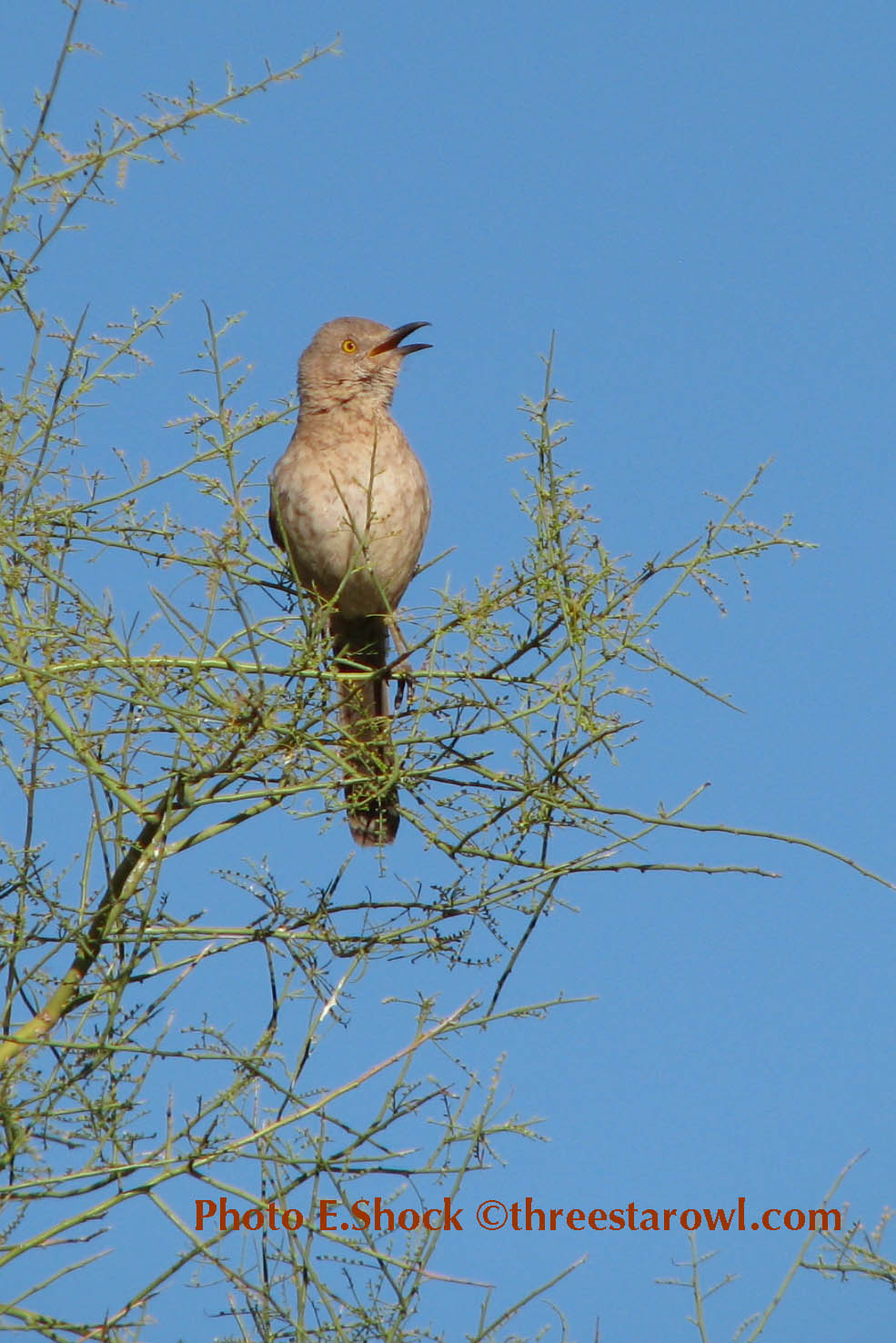Here are a few images from last weekend’s event at the Verde Valley Birding and Nature Festival. If you haven’t checked out the Verde Valley in north central Arizona, you should — it’s beautiful green country, with big trees and lots 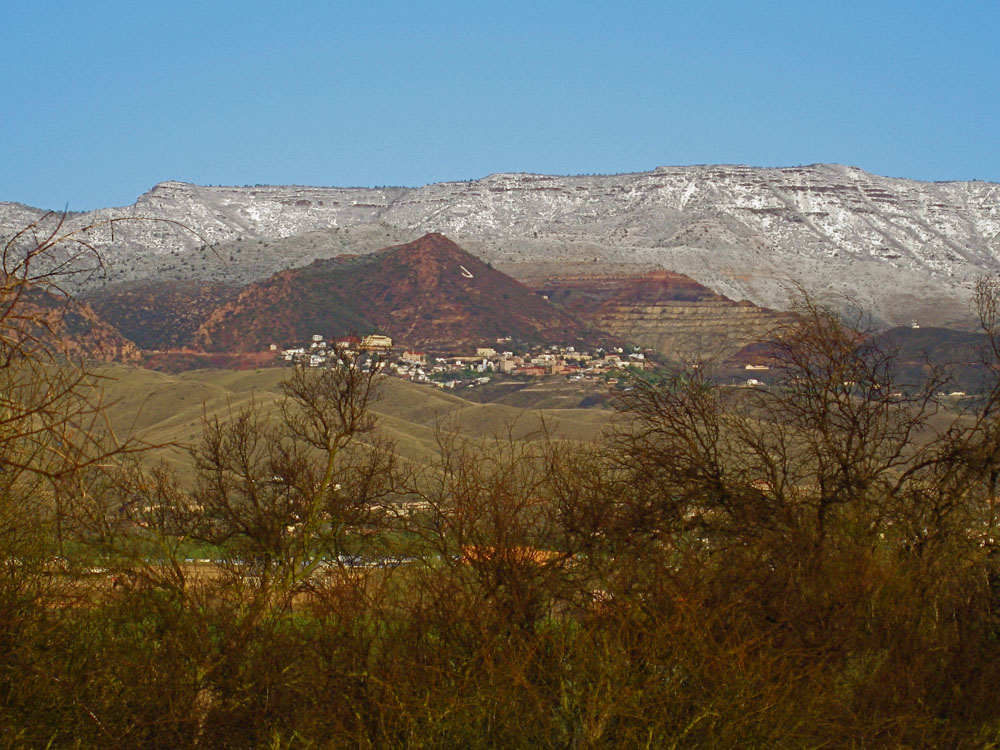 of year-round water like the Verde River, as well as surrounding mountains, good restaurants, hiking trails and birding areas, and amazing archeological sites like Montezuma Castle and Well, and Tuzigoot. Sedona, Jerome, and Prescott and their amenities are all within striking distance, and it’s all only two hours north of Phoenix and even less from Flagstaff.
of year-round water like the Verde River, as well as surrounding mountains, good restaurants, hiking trails and birding areas, and amazing archeological sites like Montezuma Castle and Well, and Tuzigoot. Sedona, Jerome, and Prescott and their amenities are all within striking distance, and it’s all only two hours north of Phoenix and even less from Flagstaff.
The weather last weekend straddled the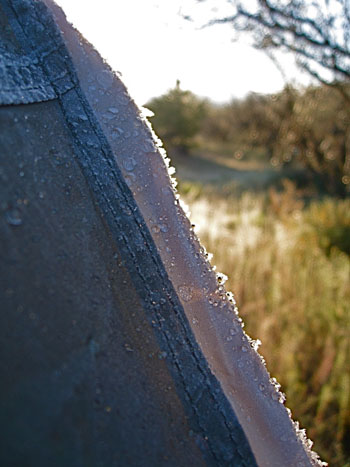 turn of the seasons, with winter making one last stand in the form of a cold wet storm that left us shivering in the big event tent, and the peaks above Jerome dusted with snow (photo above; by A.Shock). But warm weather arrived in time for the weekend, which brought out crowds and cottonwood wool alike.
turn of the seasons, with winter making one last stand in the form of a cold wet storm that left us shivering in the big event tent, and the peaks above Jerome dusted with snow (photo above; by A.Shock). But warm weather arrived in time for the weekend, which brought out crowds and cottonwood wool alike.
<< Hoarfrost and frozen raindrops on the tent; it was 24F at night! Brrrr… (Photo A.Shock)
This is one of the few sales events I camp at, because it’s held in Dead Horse Ranch State Park, just outside of Cottonwood AZ. Here’s the view from the campground, of Tuzigoot National Monument. The rangers from the Montezuma Castle/Well/Tuzigoot parks complex had their 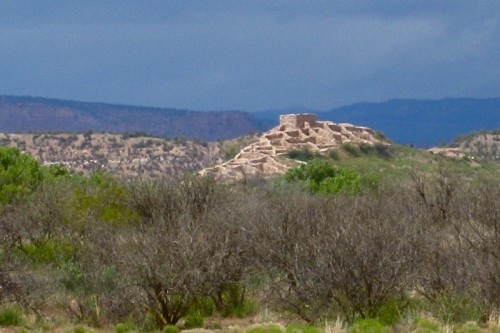 info booth next to mine, and I heard them calling this park “the Goot”. Unlike in the low desert, where the mesquite are newly green, the bosque in the foreground was still quite bare and gray. (Photo A.Shock) >>
info booth next to mine, and I heard them calling this park “the Goot”. Unlike in the low desert, where the mesquite are newly green, the bosque in the foreground was still quite bare and gray. (Photo A.Shock) >>
This made it easy to spot the early-returning migrants, such as this Gray flycatcher. If you 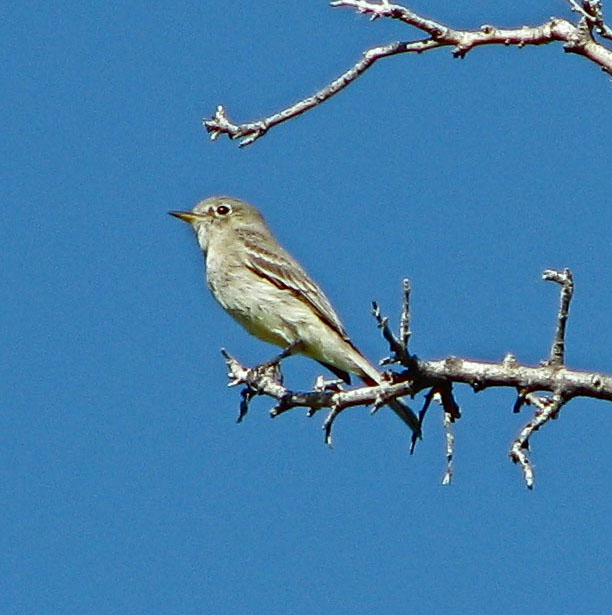 despair identifying Empidonax flycatchers, rejoice in the easy-to-ID Gray, whose gentle downward tail wag is distinctive, along with other field marks such as gray back, bold eyering and wingbars, and yellow lower mandible. (Photo E.Shock) >>
despair identifying Empidonax flycatchers, rejoice in the easy-to-ID Gray, whose gentle downward tail wag is distinctive, along with other field marks such as gray back, bold eyering and wingbars, and yellow lower mandible. (Photo E.Shock) >>
Along with gila monsters, coatis, roadrunners, and lots more, the Three Star Owl booth was positively stuffed with owls, maybe even more than usual. Below are some owl jars, effigy vessels, whistles, and salt and pepper shakers.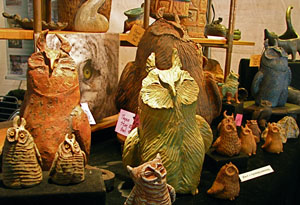
It was a good event for “The Owl”, and my thanks to everyone who came by for a visit, or to take a new treasure home with them.
See you at Southwest Wings in early August!
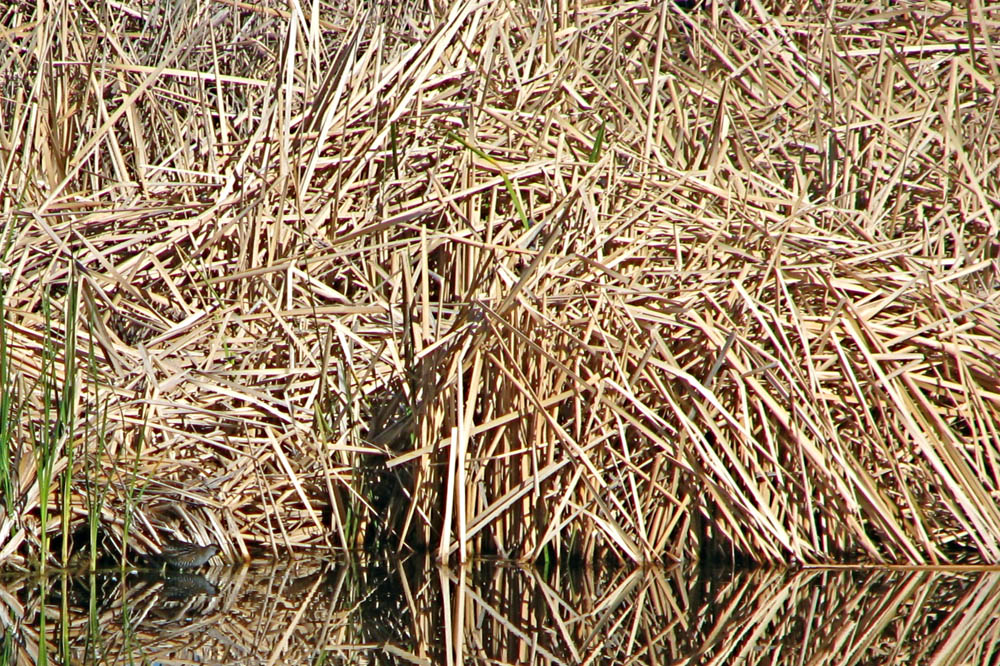 Here’s a swell photo of a Sora we saw at Tavasci Marsh last weekend. I’ve categorized this as a Spot the Bird, but your eye will probably go right to it, since it’s out in the open. The little rail had whinnied a couple of times — Sora make a sound very much like those whizzie-rings you blow into
Here’s a swell photo of a Sora we saw at Tavasci Marsh last weekend. I’ve categorized this as a Spot the Bird, but your eye will probably go right to it, since it’s out in the open. The little rail had whinnied a couple of times — Sora make a sound very much like those whizzie-rings you blow into 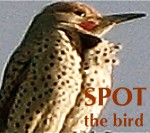 wuh-wuh-w-w-w-w-w in a descending whinny — but because rails are so secretive, we never expected to see it, until it marched out into the open at water’s edge, and did its raily foraging thing. Click to enlarge. (Photo E.Shock)
wuh-wuh-w-w-w-w-w in a descending whinny — but because rails are so secretive, we never expected to see it, until it marched out into the open at water’s edge, and did its raily foraging thing. Click to enlarge. (Photo E.Shock)
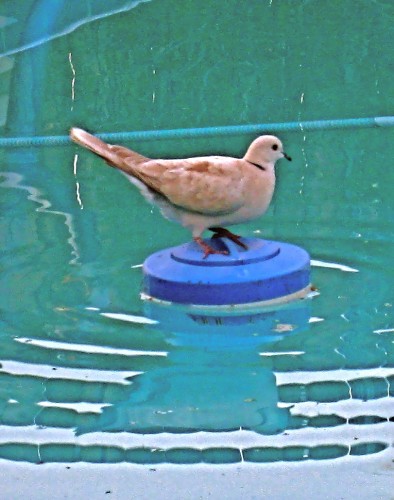
 Allison does not consider herself a wildlife artist,
but an observer who takes notes in clay.
Allison does not consider herself a wildlife artist,
but an observer who takes notes in clay.






